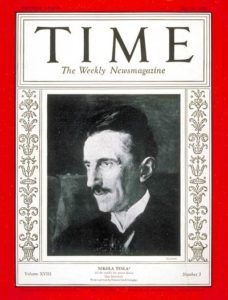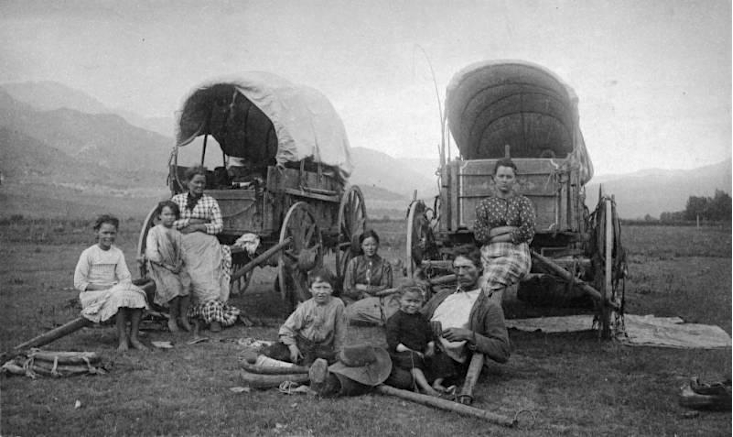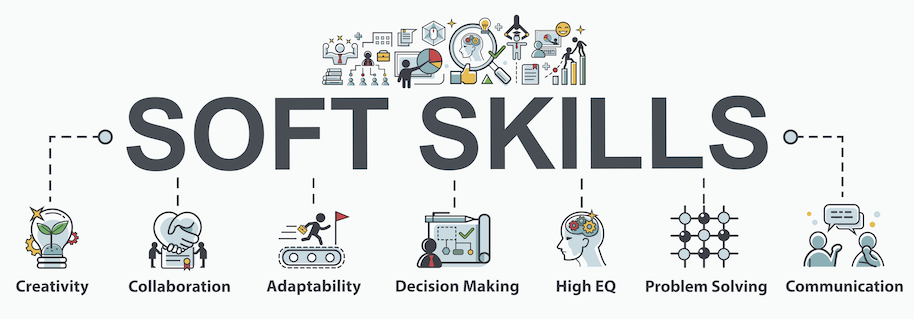Instant Relevance: Let’s Prep Students for Now
A MiddleWeb Blog

I graduated high school in 2001. It was the turn of the century and the start of the new millennium. My classmates and I had gone into our senior year of high school knowing that we were the true graduates entering the new age, not our friends who had graduated a year earlier in the last year of the previous century.
We were bright-eyed and bushy tailed, as our beloved chemistry teacher so often said to us at 7:30 in the morning as we slouched in for our first class of the day, and we were eager to take on the challenges of the brave new world before us.
Unfortunately, the previous 13 years hadn’t prepared us for that world.
Now before you get mad at me, please understand that I do not make that statement as a negative slam against the amazing educators who taught us, mentored us, coached us, tolerated us, laughed with us (and probably at us), and helped us walk down a path that would hopefully lead us toward a life of learning and growth.
But they were also the product of their times, and those times were not times of innovation and exponential growth in technology. Tradition runs deep in public education, and while the world around us evolves at lightning speed, our profession seems to prefer to move at glacial rates.
And so it was that – while there have always been pockets of forward-thinking excellence within the field – my amazing teachers prepared me for the world of the 20th century, not the 21st.
Learning what’s needed now, not in the future
I am swiftly approaching the 20th anniversary of my high school graduation, and I am amazed by how much the world around us has changed. When I was in high school, we were still told that we would need to memorize mathematical formulas because we wouldn’t always be able to look them up, and we certainly wouldn’t be carrying calculators around with us wherever we went.
(Cellular phones, while around since roughly the time of my birth, were still large, clunky devices until about the time I graduated, when feature phones began to appear on the market. PDA-type phones, such as the BlackBerry, were used almost exclusively for high-end enterprise use.)
Today I carry a supercomputer in my pocket that far surpasses the tech that took the Apollo 11 astronauts to the moon and back over fifty years ago. Some of my friends and family have upgraded to wearing their supercomputers on their wrists, a 21st century marvel to everyone except perhaps Nikola Tesla, who predicted such technology in the early 1900s.
With all of this in mind, I am growing more and more convinced that the answer to the ubiquitous classroom question “when are we ever going to use this?” is swiftly becoming “never.”
Far too many of us are using 20th century technology to teach 19th century standards to 21st century students. It is time we stop telling students that they will need this “for the future” and start teaching them what they need to know now.
Bringing our questions and our students’ questions into the classroom
For those who want to know how to do this, read Denis Sheeran, supervisor of mathematics for K-12 students in Chatham, New Jersey, former high school mathematics teacher, and author of Instant Relevance: Using Today’s Experiences to Teach Tomorrow’s Lessons (Dave Burgess Consulting, Inc, 2016).
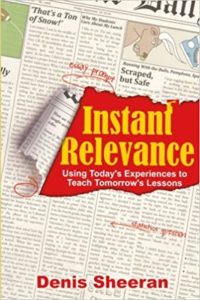
More than anything else, this notion of bringing our own and our students’ lived experiences into the classroom caught my attention. This also includes bringing our questions and our students’ questions into the classroom and using those questions to guide learning. One experience from my years as a fourth grade teacher illustrates this.
Bouncing from a hoodie to unexpected inquiry
My students had recently completed a social studies unit on early colonial America and were preparing to take a break for statewide end-of-year testing. As was my habit, I wore my college hoodies to school that week rather than my usual professional attire of dress shirt, slacks, and tie.
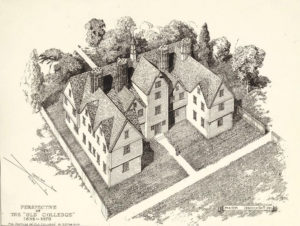
Old Harvard College 1638-1670. Harvard University Archives, Public domain, via Wikimedia Commons
The first hoodie I wore was from Harvard University. One of my eagle-eyed students noticed that the date of establishment was during the colonial era they had just finished learning about and asked a question that changed the direction of our learning for the next week:
Harvard University has been around since colonial times; how have universities changed since then?”
Rather than give a quick answer or be dismissive of the question, I turned it to my class and asked them how they could find an answer. What resulted was a short-cycle inquiry project during which students generated questions, researched answers, and developed final products to share what they had learned.
In the process, they showed an understanding of how to analyze primary and secondary sources, how to ask the right questions to find accurate information, and how to demonstrate understanding. These are skills that benefit everyone regardless of what classes, vocations, or hobbies they pursue.
An odometer leads to linear equations
In his book, Denis Sheeran shares about a time that he noticed his car dashboard had a display showing how much fuel he had left in his tank, how many miles he had driven, and how many miles were remaining before his gas tank would be empty. He noticed that the odometer reading and the range reading were not syncing up with one another; for example, after driving 17 miles, the range had only decreased by 10.
Rather than shrugging this off as an odd curiosity, he took several pictures, shared them with his math students, and had them come up with a formula that would graph the ratio of range to miles driven.
A life-changing skill? Perhaps not. But were his students more aware of the risks of relying on a readout to tell them how far they could drive a car before needing to refuel? Probably. Did they understand that linear equations can help them consider the relationship between two variables? Almost certainly. Did they learn how to think critically about data being presented to them? Absolutely!
Reaching beyond the classroom with a visual puzzle
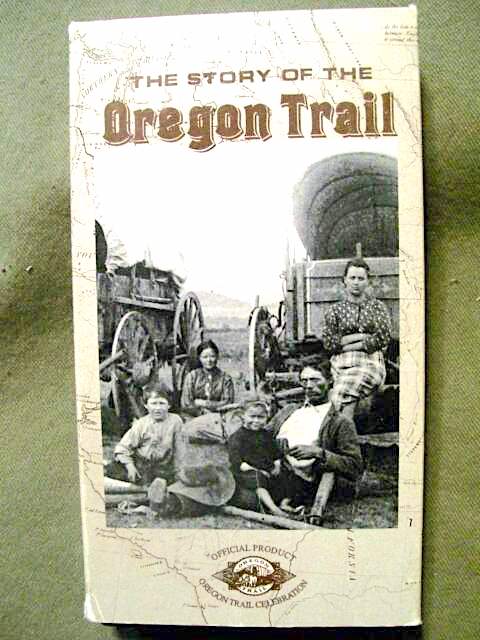
One group of students noticed this picture (right) on the cover of one of the videos of school librarian had pulled for us.
The image caught their attention because they also found, inside one of the reference books, another version of this photo from the Denver Public Library, labeled “Mormon family, approximately 1870,” below.
The students brought the video and the book to me and said, “Mr. Valencic, this video says this is a picture of a family on the Oregon Trail, but this book says it is a Mormon family, which means they would be on the Mormon Trail. The video case only shows half the picture, but this is obviously the same family. Are they on the Oregon Trail or the Mormon Trail?”
I considered their question, examined the evidence, and then asked them to consider how they could find the answer. I told them to come up with a solution and let me know how I could help.
After brainstorming, the students decided the only way to find out would be to go to the source. Of course, the Denver Public Library was nearly 1,000 miles away so they did the next logical thing: They wrote a letter to the staff of the library, and since they did not have school-issued emails at the time, asked me to send it on their behalf.
Now, I could have done that for them, but I wanted my students to completely own this learning experience, so I asked them how we could find the contact information. These fourth graders (9- and 10-year-olds, mind you) found the Denver Public Library website, navigated to the Western History and Genealogy page, and found the contact page.
They agreed that the best way to send their letter was through this page and so I copied and pasted their letter that they had typed up in Google Docs and sent it off to Denver.
A part of me figured that would be the end of it. The Western History and Genealogy staff were surely a busy group. Here was a random message coming through from some kids in the middle of Illinois wanting to know about a random picture they saw in a book, and my students were probably going to forget all about it.
I am glad that part of me was oh so very wrong! Within a few days, I got an email back from one of the staff members who very kindly explained to my students that this is the most frequently requested picture of all the pictures in their entire catalog and that many publishers use it because of how iconic it is!
They further shared that nobody knows for sure who the family is, where the picture was actually taken, or what their destination was. Many of the westward trails overlapped with each other in places and so it was quite possible that this was one of those spots.
The librarians did not stop there, though! They then offered to do a video chat with my entire class to share artifacts and answer questions. Wonderful.
Reflecting on this, I could have taught my students how to write letters in an artificial setting but by allowing for this very organic approach, my students’ writing was authentic and they were able to see the power of inquiry in a way that was, to use Denis Sheeran’s phrase, instantly relevant.
 Relevant topics and tools
Relevant topics and tools
Teaching and learning in the 21st century means that we are moving away from teaching our students how to use outdated tools and processes that were designed to solve problems that are no longer challenges today. As we move forward, our goal instead is to teach our students how to deploy the so-called “soft skills” of inquiry, critical thinking, communication, collaboration, and creativity to address complex problems with complex solutions.
We are going to be more successful in doing this when we look for ways to make learning actually meaningful and actually relevant to our students right now. Telling our students that they need to know this for some future event that may not take place simply doesn’t cut it.
When asked, “Why do I need to know this?” we should be able to respond with an immediate example from our own lives or the lives of our students, whether it is having a question brought about by a hoodie, wondering why a picture was used for two different contexts, or showing the math we used to determine the optimal time to fill our car’s gas tank. It is all about instant relevance.

